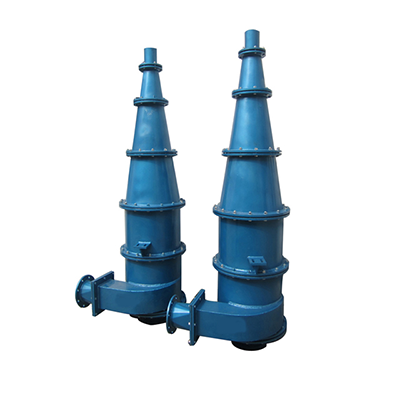How does a hydrocyclone work
Writer: admin Time:2020-08-31 14:25 Browse:℃
How does the hydrocyclone work? The hydrocyclone manufacturer will give you a brief introduction:
Hydrocyclone is an indispensable product for effective mineral processing. Their cylindrical top and conical base create a vortex, which generates centrifugal force to separate and classify particles of different sizes. This vortex forces lighter particles through the top overflow, while denser or larger solid particles through the bottom underflow.
When dealing with highly abrasive materials, heat or pressure, the durability of the materials used in the hydrocyclone is critical to the service life of the wear components of the equipment. Metals and ceramics are suitable for the most demanding applications, and the inclusion of ceramic or rubber linings can further extend the life of the hydrocyclone. Effective results ultimately depend on the quality of the machine.
cyclone as a common separation and classification equipment, its working principle is centrifugal sedimentation. When the two-phase (or three-phase) mixture to be separated enters the cyclone tangentially from the periphery of the cyclone at a certain pressure, a strong three-dimensional elliptical strong rotating shear turbulence is generated. Because of the difference in particle size (or density) between coarse particles (or heavy phase) and fine particles (or light phase), the centrifugal force, centripetal buoyancy, fluid drag force, etc. are different. Part of the coarse particles (or heavy phase) are discharged through the underflow port of the cyclone, and most of the fine particles (or light phase) are discharged from the overflow pipe, so as to achieve the purpose of separation and classification.
Features of cyclone:
1. Good concentration effect
2, high classification efficiency
3, the treatment process is simple
4, wide use, good adaptability
5, super high abrasion resistance
6, long service life
7, strong acid and alkali corrosion resistance
